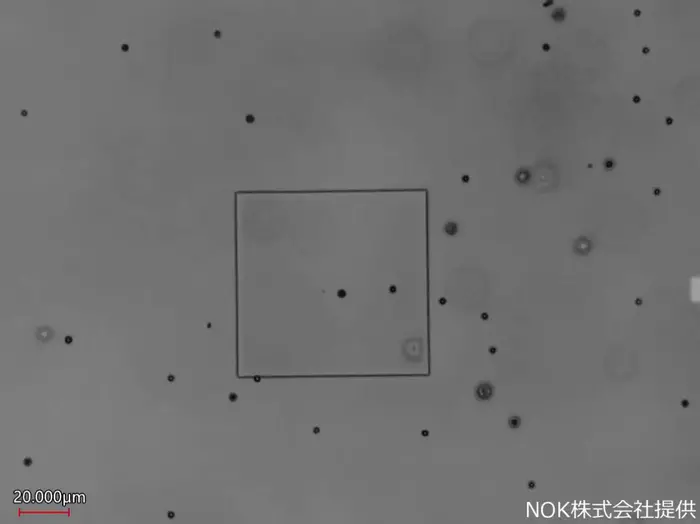
In a groundbreaking study, researchers have unveiled a revolutionary non-DNA based test that has the potential to dramatically change the landscape of viral diagnostics. This development comes at a crucial time when timely detection of viral infections can substantially influence treatment outcomes. The innovative approach leverages the capabilities of solid-state nanopores to offer a rapid and accurate identification method for viral infections, particularly in ocular cases.
Traditional methods of diagnosing viral infections, primarily relying on DNA sequencing, can be both time-consuming and complex. These tests often require hours to deliver results, creating critical delays in patient care, especially in acute situations where every moment counts. Moreover, sequencing tests cannot confirm whether the viruses detected are viable, which is vital information for effective treatment. In light of these limitations, Noriyasu Hashida and his team have designed a system that overcomes these challenges through the utilization of nanopore technology.
The nanopore-based method involves passing individual virus particles through a nanoscale pore. As each particle traverses the pore, it generates an electrical signal. This signal’s characteristics, such as electrical conductivity, vary based on the size, surface charge, and unique molecular structures of the viruses. By employing machine learning algorithms, the system can recognize specific electrical conductivity waveforms that correspond to different virus types. This advanced capability not only allows for the detection of viruses but also enables the differentiation between various viruses within the same family, paving the way for more precise diagnostics.
.adsslot_jDSYTuCnwb{width:728px !important;height:90px !important;}
@media(max-width:1199px){ .adsslot_jDSYTuCnwb{width:468px !important;height:60px !important;}
}
@media(max-width:767px){ .adsslot_jDSYTuCnwb{width:320px !important;height:50px !important;}
}
ADVERTISEMENT
In the recent evaluation of this AI-enhanced nanopore method, the researchers focused primarily on the herpesvirus, a common viral agent implicated in ocular infections that can lead to significant complications, including blindness. By analyzing samples of aqueous humor—the fluid surrounding the eye—the researchers juxtaposed the results from the nanopore technique with traditional PCR methods. Remarkably, the sensitivity of the nanopore approach was recorded at an impressive 100%, indicating that it correctly identified all instances of the virus present in the samples.
However, the specificity, which measures the accuracy of identifying non-viral samples, initially stood at 71.4%. This percentage indicates that the test occasionally identified non-target entities as viruses. Nonetheless, adjustments made during the evaluation enhanced the specificity rate to over 90%, showcasing the potential of iterative improvements in the technology. These findings suggest that as the nanopore technology continues to evolve, it could significantly enhance clinical practices in diagnosing ocular infections, and likely extend its benefits to a broader range of viral infections.
The implications of this research extend far beyond ophthalmology. Rapid and accurate viral detection can greatly affect patient management in numerous healthcare settings, including emergency departments and outpatient clinics. The ability to confirm the presence of live viruses swiftly can inform immediate treatment decisions, reducing the risk of complications associated with untreated viral infections. Furthermore, the early identification of viral pathogens can help curb the spread of infectious diseases, addressing a critical need in public health.
As researchers and clinicians alike look toward the future, the transition from conventional diagnostic frameworks to advanced technologies like nanopore-based systems marks a critical shift in medical diagnostics. The prospects of integrated AI models and nanotechnology promise to enhance the speed, efficacy, and accuracy of viral detection methods, ensuring that patients receive the timely interventions they need.
This research not only highlights the potential of solid-state nanopore technology but also underscores the importance of interdisciplinary collaboration in making scientific breakthroughs. By marrying principles of engineering, computer science, and virology, the team has successfully created a tool that could redefine diagnostics in a variety of medical fields. As the technology matures and further studies are conducted, the full spectrum of its capabilities will likely unfold, offering unlimited potential for improved patient care.
In conclusion, the introduction of a nanopore-based diagnostic system for viral infections could signify a revolutionary advancement in medical diagnostics. With its unparalleled sensitivity and increasing specificity, this innovative technology stands to save lives by ensuring that physicians can diagnose and treat viral infections rapidly and effectively. The future of viral diagnostics appears promising, with researchers motivated to refine the technology further and expand its applications, anticipating a broader impact on global health outcomes.
As the importance of accurate and rapid viral detection continues to be emphasized, the ongoing development of nanopore technology is something to watch closely. The methodologies being explored today may well become the gold standard for viral diagnostics tomorrow, representing a game-changing leap toward combating viral infections more efficiently.
Subject of Research: Rapid diagnostic methods for viral infections using nanopore technology
Article Title: Rapid diagnosis of ocular viral infections via single-virus detection using solid-state nanopore: A diagnostic evaluation study
News Publication Date: 10-Jun-2025
Web References: [Pending]
References: [Pending]
Image Credits: NOK Corporation
Keywords
Viral diagnostics, nanopore technology, herpesvirus, AI in medicine, rapid testing, ocular infections, public health, molecular recognition, electrical conductivity sensing.





